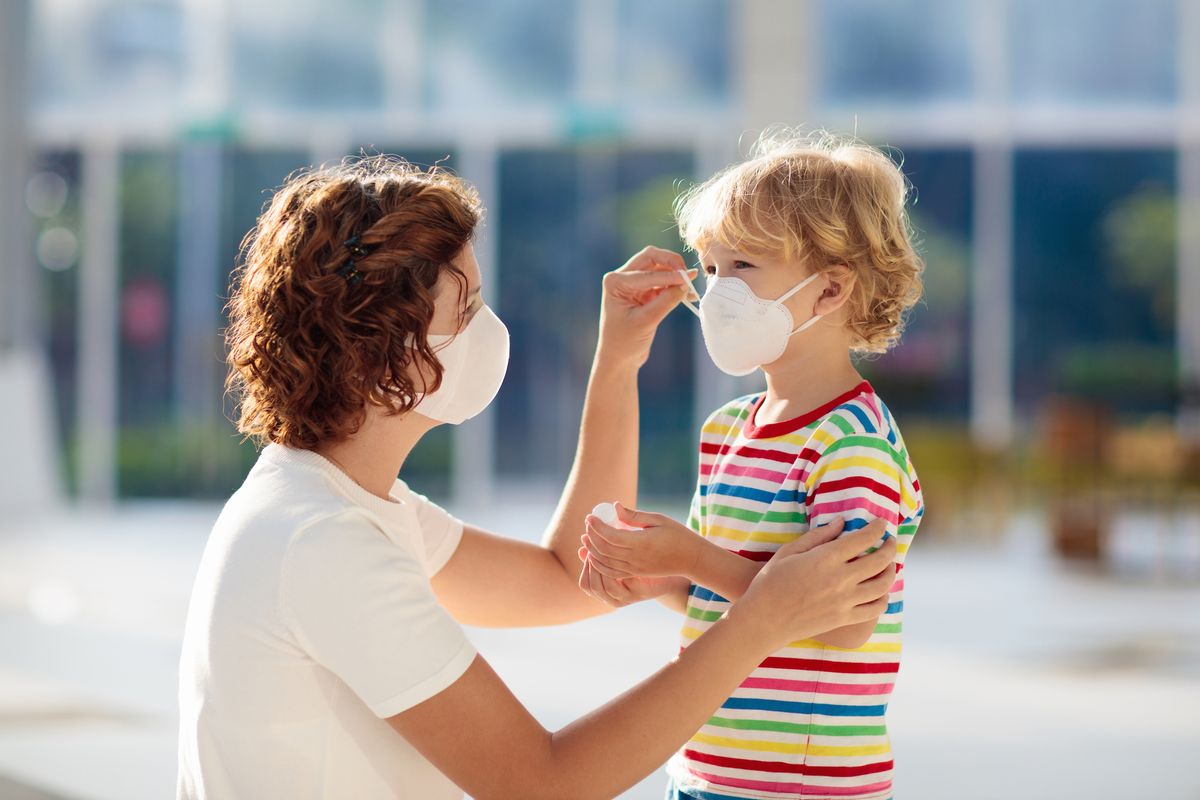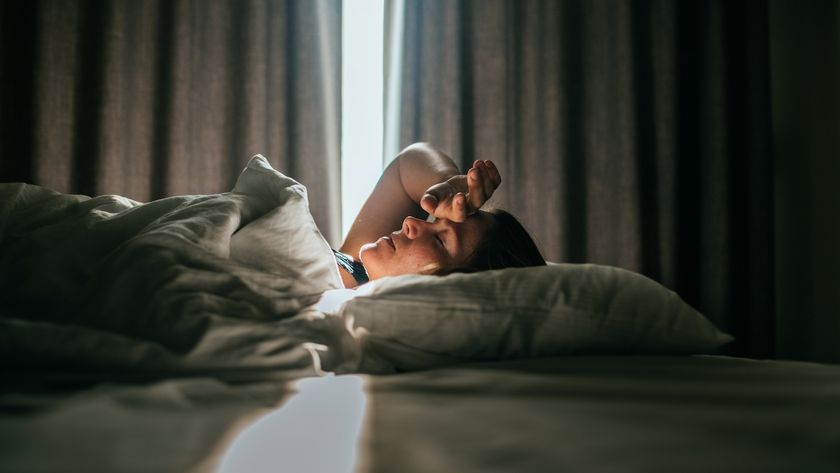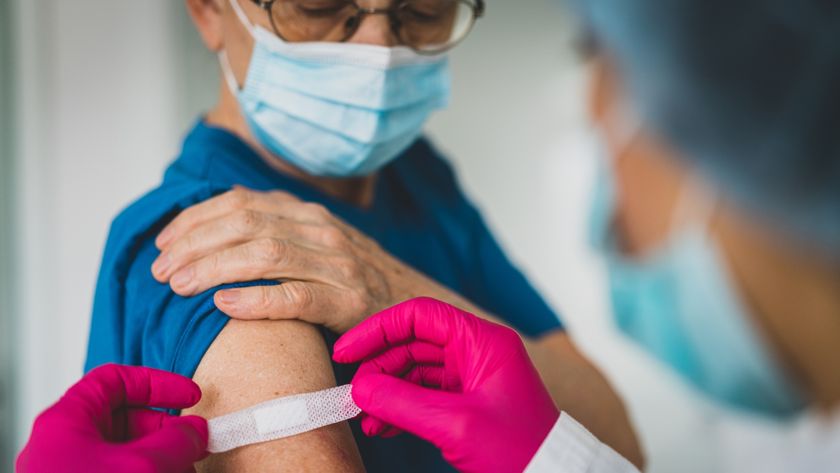Everyone should wear face 'masks' in public, CDC now recommends
This announcement reverses the CDC's previous advice.

People should wear nonsurgical cloth face coverings when they go out in public during the COVID-19 pandemic in the U.S., the Centers for Disease Control and Prevention (CDC) recommended today (April 3).
"Most people could just make something out of a certain material," President Donald Trump said at a news conference today. "It's very simple to do." However, he added that "I won't be doing it personally. It's a recommendation."
The U.S. Surgeon General Dr. Jerome Adams acknowledged that the government's guidance on masks "has been confusing to the American people," he said at the news conference. Until now, the CDC had recommended that while health care workers and "people who have COVID-19 and are showing symptoms" should wear face masks, healthy people should don masks only when taking care of someone who was ill with the new coronavirus. The World Health Organization (WHO) recommended the same.
Related: Latest COVID-19 news and US case counts
—Coronavirus in the US: Map & cases
—What are the symptoms of COVID-19?
—How deadly is the new coronavirus?
—How long does coronavirus last on surfaces?
—Is there a cure for COVID-19?
—How does COVID-19 compare with seasonal flu?
—How does the coronavirus spread?
—Can people spread the coronavirus after they recover?
"Based on the best evidence available at the time, it was not deemed that that would have a significant impact on whether or not a healthy person wearing a mask would contract COVID-19," Adams said.
However, as more knowledge about the virus has come to light, it became apparent that asymptomatic people could be spreading the virus. Up to 25% of people with COVID-19 may not show symptoms, the CDC found. Moreover, a new small study found that COVID-19 may be most infectious when symptoms are mildest, meaning that people may be spreading the virus before realizing they have it.
"This means that the virus can spread between people interacting in close proximity — for example, speaking, coughing or sneezing — even if those people are not exhibiting symptoms," the CDC said in a news statement today. "In light of this new evidence, CDC recommends wearing cloth face coverings in public settings where other social distancing measures are difficult to maintain."
Sign up for the Live Science daily newsletter now
Get the world’s most fascinating discoveries delivered straight to your inbox.
Under the new recommendation, healthy individuals are advised to wear mouth and nose face coverings — including homemade masks, scarves or bandanas — when they go to a public area, such as the grocery store or a pharmacy.
As before, the CDC does not recommend that the public wear N95 respirators, which filter out 95% of particles in the air. These masks are in short supply, and they should be reserved for health care workers who are exposed to the virus on a daily basis, the CDC said. Nor should the public wear surgical masks, which are also needed by healthcare workers, the CDC said.
Due to the limited supply, some health care workers are now reusing their N95 respirators, even though these respirators are designed for single use only.
"[Surgical masks and N95 respirators] are critical supplies that must continue to be reserved for healthcare workers and other medical first responders," the CDC said.
Even with the N95 respirator off the table for the public, there are still plenty of options available. Live Science covered the efficacy of homemade masks, finding that they're not as good as surgical masks, but still act as physical barriers against viral droplets.
If you wear a homemade cloth mask, scarf or bandana, remember to wash your hands before you put it on, Adams said. Also, you should wash cloth masks after each use and to always put the same side against your face, so you're not placing the outside, or the "contaminated side" against your mouth and nose, according to Anna Davies, a researcher at the University of Cambridge in the United Kingdom, whose research showed that surgical masks were three times more effective at blocking microorganisms compared with homemade face masks.
Davies also recommended removing the mask by the straps, so the wearer does not touch the contaminated part covering their face.
Now that the CDC is recommending face coverings for anyone going out in public, more people will undoubtedly begin wearing them. But the public shouldn't let masks give them a false sense of security. The CDC still recommends that people stay at least 6 feet (1.8 meters) away from others, and some experts think that even more distance is needed.
- 13 coronavirus myths busted by science
- 12 deadliest viruses on Earth
- 11 (sometimes) deadly diseases that hopped across species
Originally published on Live Science.
OFFER: Save at least 53% with our latest magazine deal!
With impressive cutaway illustrations that show how things function, and mindblowing photography of the world’s most inspiring spectacles, How It Works represents the pinnacle of engaging, factual fun for a mainstream audience keen to keep up with the latest tech and the most impressive phenomena on the planet and beyond. Written and presented in a style that makes even the most complex subjects interesting and easy to understand, How It Works is enjoyed by readers of all ages.

Laura is the archaeology and Life's Little Mysteries editor at Live Science. She also reports on general science, including paleontology. Her work has appeared in The New York Times, Scholastic, Popular Science and Spectrum, a site on autism research. She has won multiple awards from the Society of Professional Journalists and the Washington Newspaper Publishers Association for her reporting at a weekly newspaper near Seattle. Laura holds a bachelor's degree in English literature and psychology from Washington University in St. Louis and a master's degree in science writing from NYU.












